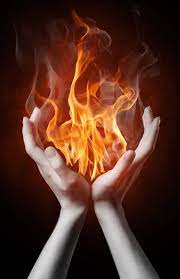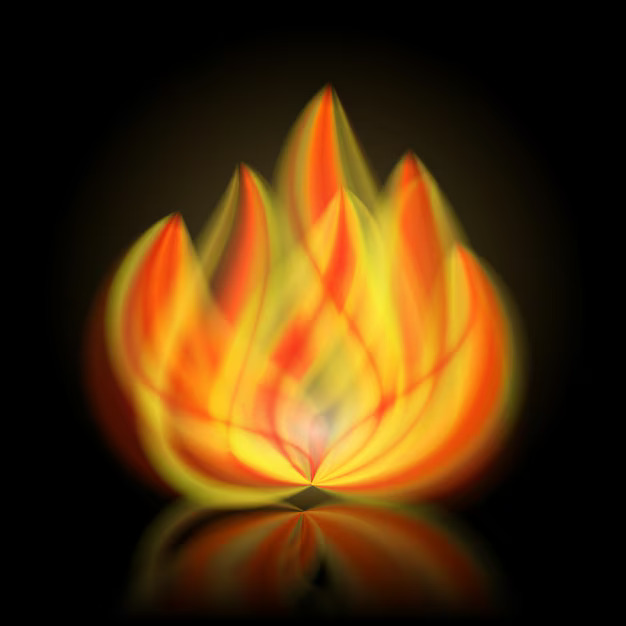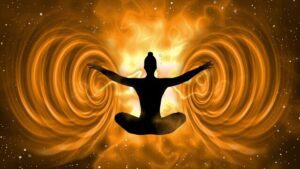
Pitta dosha ? Are you wondering what it is then read this article and get the insight of pitta dosha .
Ayurveda the ancient system of health and well-beign believes in theory of Tridosha ,the three energies that are responsible for good health as well as illness. The pitta is all about digestion , metabolism and transformation.
What is Pitta Dosha
Pitta dosha is a combination of two elements namely fire and water. The satva and rajas are the qualities related to the pitta dosha . Among all the three dosha Pitta governs the digestion process in the body. The cellular metabolism is also governed by the pitta. Pitta is heat. Heat is sign of livelyhood.
To understand the pitta dosha easily just compare it with the fire outside the body.
The fire outside is used for cooking the food. In the same way the pitta inside the body uses its heat to digest the food and make nurtients out of it. Therfore pitta is compared to Agni. However pitta is a stagnent energy it cannot move on its own and have to depend upon Vata to move it from one place to another.
Also read Basics of Ayurveda: Learn about Vata, Pitta, Kapha
Defination
The one which has got taap means heat and reflection of digestion, seeing, and maintaining the heat within the body is called Pitta.
Pitta dosha support intelligence,vitality and a strong digestive system.
Tej, Ushma, Anala, Mayu, Agni are the synonyms of pitta dosha.
Qualities of Pitta Dosha
Ushan ( Hot) : Means it creates heat in the body
Tikshna (Sharp) : Penetrating and intense
Laghu ( Light) : This means it is very light.
Snigdha ( oily) : It is slightly unctuous.
Sara ( Mobile) : Spreads throught the body easily.
Drava ( Liquid) : It is in liquid form and associated with bodily fluid.
Where is Pitta located in the body
Pitta is predominantly located in between stomach and intestine . This covers the small intestine, the liver and the pancreas. Main seat of pitta dosha is grahani .Grahni is also known as pitta dhara kala. It the place where the digestion of food take place. However pitta is also found in blood,eyes, skin, and sweat gland.

Sub Types of Pitta dosha
Pitta has five subtypes and have different functions in the body. They are as follows
- Pachak Pitta : It is located in deuodinum and small intestine , chest,throat nose and heart. Pachak pitta aids in digestion, seperation of nutrients and excreata. It provides warmth to entire body.
- Ranjak Pitta: Is located in the liver and spleen. It provides colour to nutritive juices and helps in formation of blood.
- Sadhak Pitta : It is located near the heart and brain. Main function of sadhak pitta is to provide motivation to fullfill one aspiration through intellect and zeal.
- Alochak Pitta : It resides in eyes. It enables perception of vision.
- Bhrajak Pitta : It is located in the skin and is responsible for absorption of the external application such as oils, lepas, creams for utilization in the body.
Normal Functions of Pitta dosha in body
It helps in digestion (pachan)of food.
Parinamana means it helps convertion of food in to energy which is used by cells.
It enables Darshan that is proper perception of visual objects by eyes .
Helps in maintaining (ushma) normal tempreture of the body.
Controls the sweat gland and provides moisture to the skin
Helps in absorption of oils, creams , lepas from skin.
Responsible for manifestation of courage ( shourya), pleasure and tranquility.
Pitta imparts complexion to the skin (Ranjan).
It provides luster to the skin.
Keeps digestive fire at the optimal levels.
It is responsible for intellect ( Medha), appetite (kshuda), thirst ( trishna) and anger (krodha).
What are the causes of Pitta Aggravation
According to the Ayurveda when the diet and lifestyle factors that are similar to qualities of pitta dosha are taken then it will lead to increase of pitta in the body. Like
- Food items that tend to increase pitta are deep fried food, fast and junk food, spicy and oily food items .
- Excessive exercising.
- Working in extreme heat, under sun for too long time
- Over indulgence in sexual activities.
- Irregular meals timings due to fast paced lifestyle
- Suppression of natural body urges such as urination, crying, burping, farting etc.
- Too much thinking , stress and tension leads to pitta aggravation.
- Tension, stress, grief, fear, anger are some reasons that lead to aggravation of all three doshas.
What are the symptoms of Pitta dosha Imbalance
When pitta dosha gets out of balance then the symptoms are seen in two ways
1. Pitta- Vriddhi : This means when pitta increases in its qualities.
2. Pitta-Kshay : This means when pitta reduces from its normal state.
It is an energy that controls metabolic activities among all the three dosha , therefore if pitta aggravates because of above factors then body and mind faces lot of problem such as
- It will lead to digestive problems like acid reflux and jaundice
- Because of excess of heat of pitta dosha,the greying of hairs are seen at an early age .
- It makes the person more prone to anger.
- The sense organ eye is unable to perform there normal activities.
- Aggravated pitta is responsible for feverish feeling and rise in temperature.
- It is responsible for acne and other skin problems.
- Pitta is responsible for 40 types of diseases in human body.
Pitta Vridhi Lakshana
Signs of pitta dosha imbalance when it increases
1. Pitta- Vriddhi : This means when pitta increases in its qualities.
- Yellowish discoloration of purish ( stool), mutra (urine), netra (eyes), and twacha (skin).
- Shitabhilasha means desire for cold items.
- Alpanidra means lack of sleep.
- Ati trishna means increased thirst.
- Ati kshuda means increased hunger.
- Daha means burning sensation in body.
- Tikthayasta means bitter taste in the mouth.
- Krodha means anger.
- Murcha means giddiness.
Pitta Kshay Lakshana
Sign of Pitta imbalance when it reduce .
1. Pitta-Kshay : This means when pitta decreases.
- Mand anala means poor digestion or appetite
- Arochaka aversion to food
- Shwet varna of nakha- netra (whitish discoloration of nails-eyes and skin)
- Prabha hani ( loss of luster)
- Stambha means heaviness in the body
- Angaparushya coarseness on the whole body
- Kampa means tremors.
Pitta relation with Day
All the dosha in the body varies acording to the age, season, during 24 hours in a day. For pitta dosha it is predominant in the body at following time of the day.
In Morning between 10 Am to 2 Pm
In Night between 10 Pm to 2 Am.
So when there is pitta imblance in the body the symptoms of the diseases are seen more during this time .
Pitta relation with Season
Pitta dosha tends to accumulate in the rainy season. It aggravates in the Atumn season ( Sharad ritu). This is the reason problems realted with pitta dosha like heartburn,acid reflux, skin rashes, headache, are seen in autumn season.
So to prevent pitta problems in autumn season it is advised to take diet that helps to keep pitta in balance. Grishm ritucharya described in ayurveda should be adopted .
Pitta dosha relation with Age
Pitta dosha get predominant as the age of person reaches its youth . The middle age is known as phase of pitta dosha. As the age progress the Agni ( digestive fire ) comes to its peak , this lead to healthy digestion and best absorption of nutrition . As a result there is healthy formation of Dhatus ( tissue). However if pitta increases too much during this phase it leads to many problems like pimples on face, hairloss, early greying of hair, anger and others.
So to prevent this problems ayurvedic practioners prefer using pitta balancing ayurvedic herbs and cooling food in the diet. External application of medicated oil is also good way to reduce excess pitta.. Along with this person should prefer diet and lifetstyle that helps in balancing pitta dosha.
Pitta and Digestive fire
The Agni ( Digestive fire) is the essence of life and it is affected by the state of dosha in the body.
When Agni is affected with pitta dosha then it become to sharp, that means the Agni will digest all the food whether it is light or heavy. This is known as Tikshna Agni. If it becomes too strong it will cause indigestion and heartburn.
Those who have tikshagni tends to suffer from pitta type of indigestion which is known as Vidhagdh ajeerna.
Pitta and Bowel movement
As said earlier grahni ( deuodinum) is the main seat of pitta and it controls all the other types from here. However when pitta aggravates in the grahani or in people who have excessive pitta then this bowel is known as Mrudu koshta. This means these people generally will have normal stool and no difficulty in passing stool. However if they feel like incomplete evacuation of bowel then even mild laxative work for them.
Association of Pitta with Ama
Ama is by product of weak digestion. When the Agni ( digestive fire) is not able to digest the food properly then it fails to produce the ras ( nutrition) and as a result of this a by product is formed called as Ama. In Ayurveda this Ama is beleieved to be the root cause for diseases.
When the doshas get associated with Ama this stage is known as Sama awastha of dosha . When Pitta dosha is accociated with Ama it is known as Sama Pitta.
Symptoms of Sama-Pitta
When pitta gets associated with Ama then following symptoms are seen
- Heartburn
- Sour belching
- Pitta gets greenish colour
- Sluggish feeling
- Nausea and vommiting
- Burning type of pain
- Inflammation
- There is foul smell in pitta
Conclusion
The pitta dosha is one of the dosha and is responsible for digestion, controlling metabolism and maintaining tempreture of the body. When in balanced state it brings healthy digestive system, creativity and happiness. However when it is imbalanced pitta leads to many diseases in the body. It has deep relation with digestive fire, different seasons and age of person. By keeping pitta in balance one can prevent many diseases and even delay the ageing process.
This Article is written by Dr. Ashutosh Tiwari B.A.M.S, PGDCR Director of Risha’s Health And Ayurvedaa Solutions.He is having more than 20 years of experience in field of Ayurvedic medicine.



